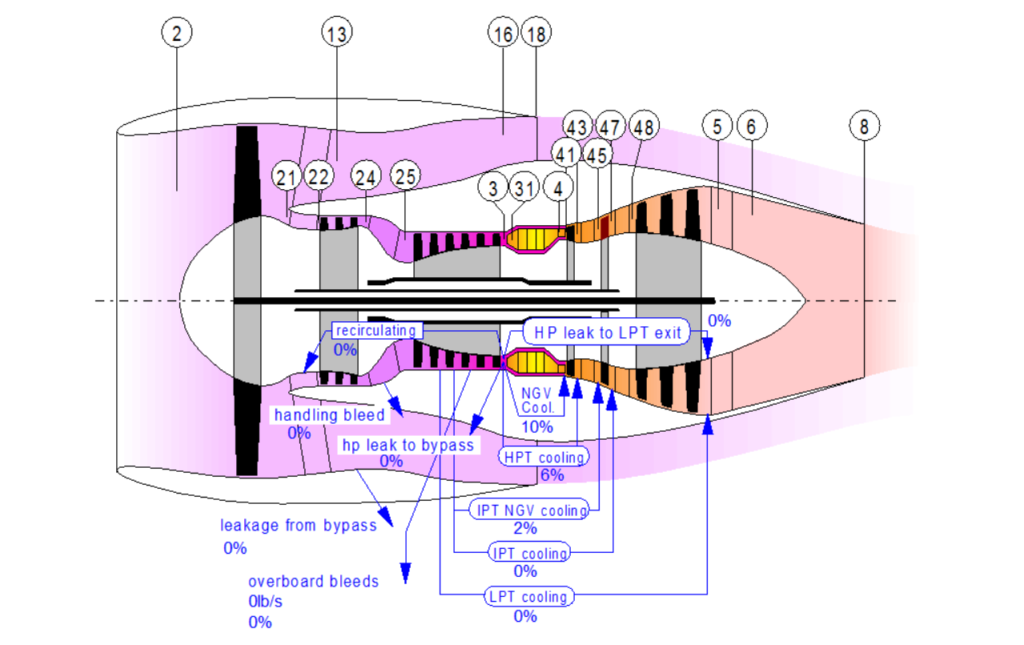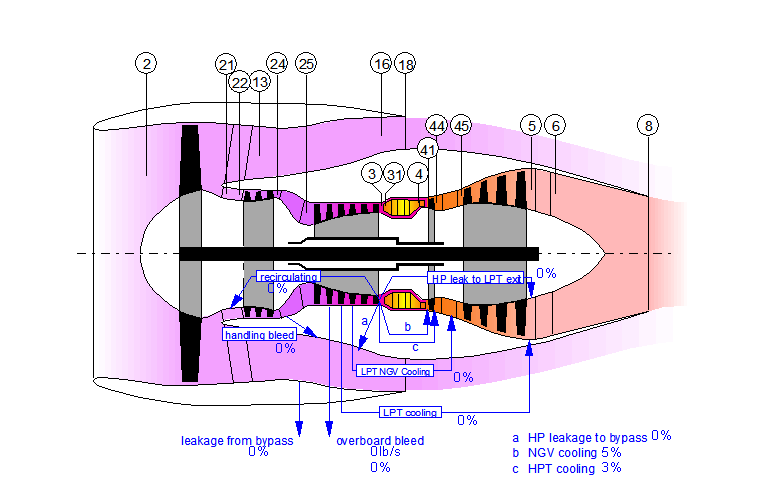Leeham News and Analysis
There's more to real news than a news release.
‘Tailwinds’ push MTU Aero Engines to hit earnings target early after solid Q3
By Leeham News Team
Oct 24, 2024, © Leeham News: MTU Aero Engines reported solid financial performance for the third quarter, with the German manufacturer confirming it would achieve its earnings target of €1 billion ($1.08 billion) a year early thanks to strong results across its military and commercial divisions.
The company’s adjusted revenue increased by 14%, rising from €4.6 billion as of September 2023 to €5.3 billion in 2024.
Adjusted operating profit to September rose by 25% to €744 million, versus €597 million in the first nine months of 2023, while adjusted EBIT for the quarter rose by 42% to €273 million, versus €192 million in Q3 2023.
The adjusted EBIT margin increased from 12.8% to 14.0% and adjusted net income to September rose to €541 million, an increase of 23% from €438 million. The results, announced on Thursday, beat market expectations, and shares were trading up by around 1%.
Speaking to investors, CEO Lars Wagner said “current tailwinds” were offering MTU “significant growth opportunities”, with robust demand across the OEM, spare parts and maintenance businesses driving this.
Wagner said MTU was also benefiting from improvements within the supply chain. “Am I happy? Not yet, but some of the parts have recovered earlier than expected. I see a good trend here so in general the supply chain is improving,” he said. Read more
GTF engine issues knock MTU off course
By Tom Batchelor
February 29, 2024, © Leeham News: Problems affecting Pratt & Whitney’s Geared Turbofan (GTF) weighed on MTU Aero Engines last year but the German manufacturer still reported a solid performance in its earnings announcement on Thursday.
CEO Lars Wagner acknowledged 2023 had been a “year of contrasts,” with the “enormous financial burden” of the GTF fleet management plan balanced against higher revenues in its OEM and MRO businesses.
Analysts said the results were broadly in line with expectations with the GTF fleet inspection program remaining on track.
MTU revealed last year that it would take an estimated €1bn knock from disruption caused by powder metal issues with partner Pratt & Whitney’s PW1100G-JM GTF. That figure was confirmed by MTU today. Read more
MTU posts upbeat earnings report despite €1bn GTF hit
Subscription Required
By Gordon Smith
Oct. 30, 2023, (c) Leeham News: MTU Aero Engines has confirmed its guidance for 2023 and posted higher adjusted sales and earnings in the third quarter. The numbers are the first reported by the German company since it revealed last month that it would take a €1bn knock from the Geared Turbofan (GTF) inspection program.
 The exceptional charges dragged the engine manufacturer into the red with an EBIT loss of €410m for the first nine months of 2023. The comparative earnings figure for last year was €331m, representing a sharp 224% fall.
The exceptional charges dragged the engine manufacturer into the red with an EBIT loss of €410m for the first nine months of 2023. The comparative earnings figure for last year was €331m, representing a sharp 224% fall.
In September, the firm said well-documented powder metal issues with the Pratt & Whitney PW1100G-JM GTF would knock revenue and earnings for the year by around €1bn. During an earnings call on September 27 attended by Leeham News, MTU CFO Peter Kameritsch said he expected this figure to be slightly above the €1bn mark. Without adjustments, revenue was €3.7bn for the first nine months of 2023. Adjusted operating profit was €597m, up a third from the €448m posted a year earlier.
Commenting on the latest numbers, CEO Lars Wagner said: “MTU posted organic growth in all business segments. However, exceptional charges for the Geared Turbofan inspection program affected our figures.”
Adjusted net profit reached €138m, up from €113m a year earlier. Adjusted EBIT – which is the company’s chosen profitability metric – grew to €192m from €158m, representing a margin of 12.7%. Kameritsch acknowledged that “favorable exchange rate effects” provided a welcome boost to the numbers, alongside the company’s “positive revenue mix and a good cost base”.
Read more
Bjorn’s Corner: Aircraft engine maintenance, Part 6
April 7, 2017, ©. Leeham Co: Last week’s Corner developed the overhaul shop visits per year for wide-body engines. We will now look at how the market develops around these overhaul opportunities.
How does the shop structure develop over a popular engine’s life-cycle? How much choice has an operator and when?
Bjorn’s Corner: Aircraft engine maintenance, Part 3
March 17, 2017, ©. Leeham Co: In the last Corner, we showed graphs of the yearly flight hours for engines on single-aisle aircraft. Now we will deduce the market for engine overhauls from these graphs.
These will show which engines generate a maintenance volume that is interesting for engine overhaul companies and which engines are niche.
Based on the market size, we will then go through how an engine is maintained when new, mature and at end-of-life.
Bjorn’s Corner: Turbofan engine challenges, Part 3
November 12, 2016, ©. Leeham Co: In our trip through a modern turbofan airliner engine and its technologies, we looked last week at the engine intake and the fan. We now continue with the compressor parts.
As compressors and turbines use the same principles (but in opposing ways), we will look at these principles this week and how their roles in the engine create their special characteristics.
As before, to make things concrete, we use a GasTurb simulation of a Rolls-Royce Trent XWB 84k engine to look at practical data when needed. As before, I have no specific knowledge about the engine and will not use any data outside what is public information.
The GasTurb cross section of a three-shaft turbofan is shown in Figure 1. We will examine the sections between station numbers (22) and (3) and (4) and (5) in the general discussion of compressors and turbines. We will then look at some data for common compressors. Read more
Engine industry clamoring for road back
By Bjorn Fehrm
Subscription required.
Introduction
October 13, 2016, ©. Leeham Co: The airline engine industry is like a ticking bomb. Over the years, a business practice of selling the engines under manufacturing cost and planning to recover costs and make a profit on the aftermarket developed. This goes back decades.
The practice was fostered by fierce competition over the engine contracts for aircraft which offered alternative engines. The losses of the engine sales could be made up later by selling spare parts and services at high margins.
These “jam tomorrow” practices have several implications. The engine industry is now confronted with these and wonder how it could put itself in such a bind. How to handle these and what is the way back?
Summary:
- High competition in engine sales forced ultra high discounts for the up-front engine sale.
- Aftermarket schemes was created that should recover profits over spare parts and services.
- But these maintenance practices create all sorts of problems in the used engine market.
- The engine industry now wants to return to more normal business practices. But how do they find the way back?
Bjorn’s Corner: What did we learn in 2015; engines
15 January 2016, ©. Leeham Co: Last week we looked back on what happened in 2015 on the airframe front. We finish the retrospective by looking at what turbofan engine technology came to market in 2015. New engine technology is vital, as it is on the engine side that the quest for higher fuel efficiency has the largest successes.
While advances on the airframe side might bring an additional 5% per generation, the engines typically increase their efficiency per new generation with up to three times that value. Fuel efficiency per delivered thrust unit was improved with a whopping 15% over the engine it replaces for the Pratt & Whitney Geared Turbofan (PW GTF). It was certified for use on the Airbus A320neo in Q4 2015
The competing CFM LEAP-1A shall deliver the same improvement level to the A320neo once it is certified in the summer of this year. This engine has a smaller sister that started ground tests last year, the LEAP-1B, which is developed for the Boeing 737 MAX series.
The engine that is easily forgotten is the Rolls Royce Trent XWB. It entered service on the Airbus A350-900 during the year. It brings an improvement level of around 10% compared to the engines of the aircraft that the A350 replaces (Airbus A340/A330ceo and Boeing’s 777-200 range).
Airbus A400M; how good and how late?
Subscription required
By Bjorn Fehrm
Introduction
01 Feb 2015: Six years ago Tom Enders, then-CEO for Airbus (when the parent was named EADS), threatened to stop the A400M project. He then played hardball to get eight European states to understand they had to pay 5bn Euro more or get no plane. Airbus existence could be threatened by a project that its management when the program was launch (CEO Jean Pierson) did not want but that the politicians convinced Pierson’s successor, Noel Forgeard, to do.
Now Tom Enders is CEO of Airbus Group and has to apologize to the same governments that he struck a deal with then to finish the project if Airbus got the money and a consent to three years of delays. Now Airbus can no longer fulfill the terms and the airplane is still falling short of performance specifications. Deliveries have been delayed further and promised capabilities will be delivered later than said. Like then, heads are rolling at Airbus and tighter control is being applied.
Summary
- The A400M rests between the Lockheed Martin C-130 and the Boeing C-17.
- European countries need an airlifter for military and humanitarian missions.
- Dirt airstrip capability is needed.
- The program will take longer to complete and this time Airbus has to pay.







